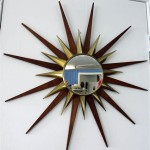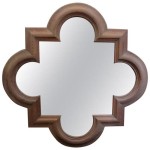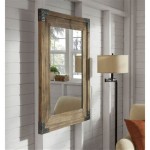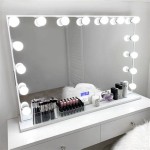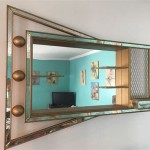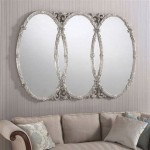Convex Mirror Creates Real Image: Exploring the Possibilities
The statement "convex mirror creates a real image" appears paradoxical at first glance. Convex mirrors are renowned for producing virtual, upright, and diminished images. Traditional geometrical optics dictates that light rays diverging from a real object reflected by a convex surface will never converge to form a real image. However, under specific circumstances involving modified optical systems or unconventional light sources, a real image can indeed be formed using a convex mirror.
One such circumstance involves the use of a converging lens placed in front of the convex mirror. If an object is positioned at a suitable distance from the converging lens, it forms a real, inverted image. This real image then acts as a virtual object for the convex mirror. If the virtual object is positioned within the focal length of the convex mirror, the reflected rays diverge. However, if the real image formed by the lens falls beyond the focal point of the convex mirror, then the diverging rays reflected by the convex mirror can converge after passing back through the lens, creating a real image. This system effectively utilizes the convex mirror to modify the characteristics of the image initially formed by the lens.
Another scenario involves using a non-conventional light source that emits converging rays of light. In standard scenarios, light rays emanate from an object point and diverge. However, if a light source emits converging rays directed towards a convex mirror, these rays can be reflected to converge at a real image point in front of the mirror. This scenario deviates from the typical assumption of diverging rays from a real object and can be achieved with specialized optical setups or devices capable of generating convergent beams.
Understanding these principles requires a deeper dive into the underlying physics. Reflection from a convex surface adheres to the law of reflection, which states that the angle of incidence is equal to the angle of reflection. The reflected rays diverge from the mirror surface. The image location, whether real or virtual, is determined by tracing these reflected rays backward. The intersection point of these extended rays defines the image location. For a virtual image, the rays themselves do not actually converge at that point, but their extensions do. Conversely, a real image is formed where the reflected rays physically converge.
The focal point of a convex mirror is a crucial concept in understanding its image formation properties. It is defined as the point where parallel rays incident on the mirror appear to diverge from after reflection. The focal length is the distance from the mirror surface to the focal point and is always negative for a convex mirror, signifying its diverging nature.
Mathematical analysis further clarifies the possibilities of real image formation. The mirror equation, 1/f = 1/p + 1/q, relates the focal length (f), object distance (p), and image distance (q). For a convex mirror, f is negative. If the object is real (p is positive), the image distance (q) will always be negative, indicating a virtual image. However, if we consider a virtual object, meaning p is negative, it is mathematically possible for q to be positive, corresponding to a real image. This scenario aligns with the case of a converging lens creating a real image which subsequently serves as a virtual object for the convex mirror.
The magnification equation, M = -q/p, provides insights into the image characteristics. For convex mirrors with real objects, magnification is always between 0 and 1, signifying an upright and diminished image. For virtual objects leading to real images, the magnification can be greater than 1, indicating an enlarged image, or negative, indicating an inverted image.
The concept of a real image formed by a convex mirror might seem counterintuitive, but it is physically plausible under specific conditions. These conditions usually necessitate the introduction of additional optical elements, such as converging lenses, or the use of unconventional light sources emitting converging beams. The principles of geometrical optics, coupled with the understanding of virtual objects and the mathematical relationships governing mirror behavior, unveil the circumstances under which this seemingly paradoxical phenomenon can occur.
Further exploration of this topic can involve experimental verification using optical components and precise measurements of image locations and characteristics. By carefully manipulating the setup and employing different light sources and configurations, the theoretical predictions can be tested and confirmed, deepening the understanding of the underlying principles.
Can A Convex Mirror Produce Real Image
Can A Convex Mirror Form Magnified Image Quora

Can A Convex Mirror Produce Real Image When The Object Is Virtual And Vice Versa Concave If Yes How Will It Be Possible Why Quora
Can A Convex Mirror Form Real Image Quora
Is It Possible For A Convex Mirror To Produce Real Image When The Object Virtual Quora

Difference Between Real Image And Virtual

Real Image Wikipedia

Convex Mirror Image Formation Conditions Ray Diagram Uses
Is It Right A Convex Mirror Always Forms An Inverted Image Quora
Is It Possible For A Convex Mirror To Produce Real Image When The Object Virtual Quora

